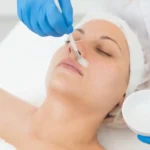THE WHAT? Shiseido is set to commence operations of its Osaka Ibaraki Factory and West Japan Distribution Center (WJD) in Ibaraki City, Osaka Prefecture, Japan, this month, following its completion in December 2020.
THE DETAILS Acting as a new concept supply chain base with four functions of factory, logistics, consumer centre and factory tour course, the company is said to have improved productivity, strengthened its production system, and established a production and supply network system.
According to a press release, “In addition, the distribution center is newly established on the same premise of the Osaka Ibaraki Factory, which is the first time for Shiseido’s factories, aiming to improving work efficiency from production to transportation, reducing transportation costs and environmental burdens.”
The factory will focus on manufacturing prestige skincare products, be environmentally sustainable, a ‘people first’ workplace environment, and work together with local communities.
THE WHY? The reforms fall as part of Shiseido’s medium-to-long-term strategy, WIN 2023 and Beyond, with the company ‘promoting the establishment of supply network strategy for production bases from a global perspective.’
The company said, “We aim to create a system that allows each factory to respond flexibly, taking into account not only cost, but also various factors such as lead time, inventory and raw material procurement. We are also trying to build a cutting-edge factory that incorporates the latest technologies such as IoT and AI. At the same time, we will establish a manufacturing system that can lead the industry by making the factory a place where people can work comfortably and with pride.
“In addition, with an eye on the post-COVID-19 situation, the Fukuoka Kurume Factory (Kurume City, Fukuoka Prefecture, Japan) is scheduled to start operation in the first half of 2022, following the Nasu Factory established in 2019 and this Osaka Ibaraki Factory to meet the expected future expansion of demand in Japan and overseas.”
Aesthetic medicine products are developed and regulated to meet stringent safety and efficacy standards. They are typically administered by trained healthcare professionals such as dermatologists, plastic surgeons, and specialized nurses in clinical settings. These products aim to provide effective solutions for cosmetic enhancement, skin rejuvenation, and overall aesthetic improvement, contributing to both physical appearance and self-confidence.
Key categories of aesthetic medicine products include:
-
Injectables: This category includes products such as dermal fillers, botulinum toxins (e.g., Botox), and collagen stimulators. These injectables are used to smooth wrinkles, add volume, and improve facial contours.
-
Skin Rejuvenation Treatments: Products like chemical peels, microdermabrasion systems, and laser devices are used to improve skin texture, reduce pigmentation irregularities, and enhance overall skin tone.
-
Skincare Products: These include medical-grade cleansers, moisturizers, serums, and topical treatments containing active ingredients like retinoids, antioxidants, and growth factors. They are formulated to address specific skin concerns such as acne, aging, and hyperpigmentation.
-
Hair Restoration Products: Medical treatments and products designed to promote hair growth and treat conditions such as male and female pattern baldness.
-
Body Contouring and Fat Reduction: Devices and products used for non-surgical body sculpting, such as cryolipolysis (cool sculpting) devices and injectable lipolytics.
-
Cosmeceuticals: High-performance skincare products that bridge the gap between cosmetics and pharmaceuticals, often containing potent ingredients with proven clinical benefits.
-
Wound Care and Scar Management: Products like silicone sheets, gels, and advanced wound dressings used to improve healing and reduce the appearance of scars.





